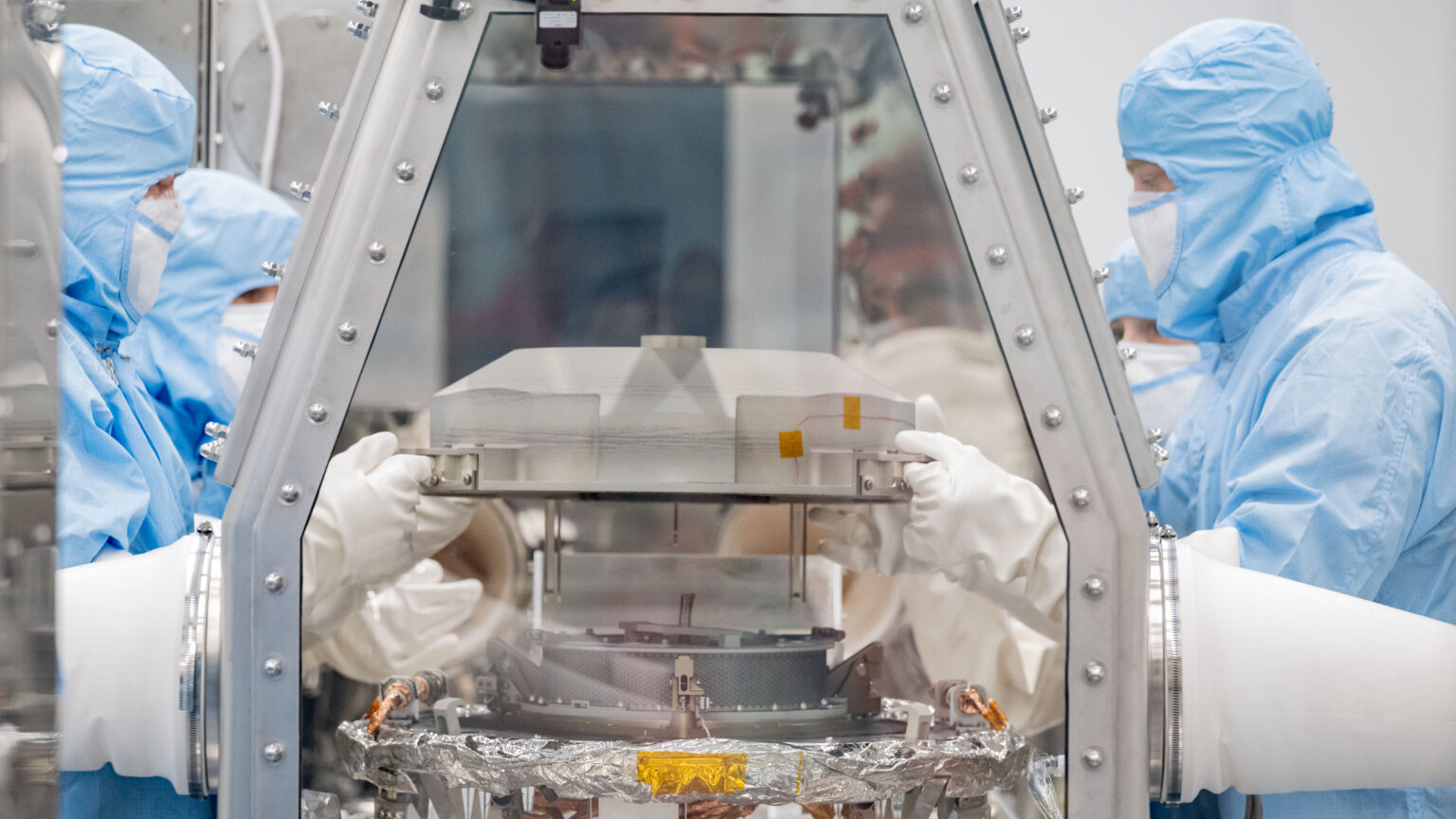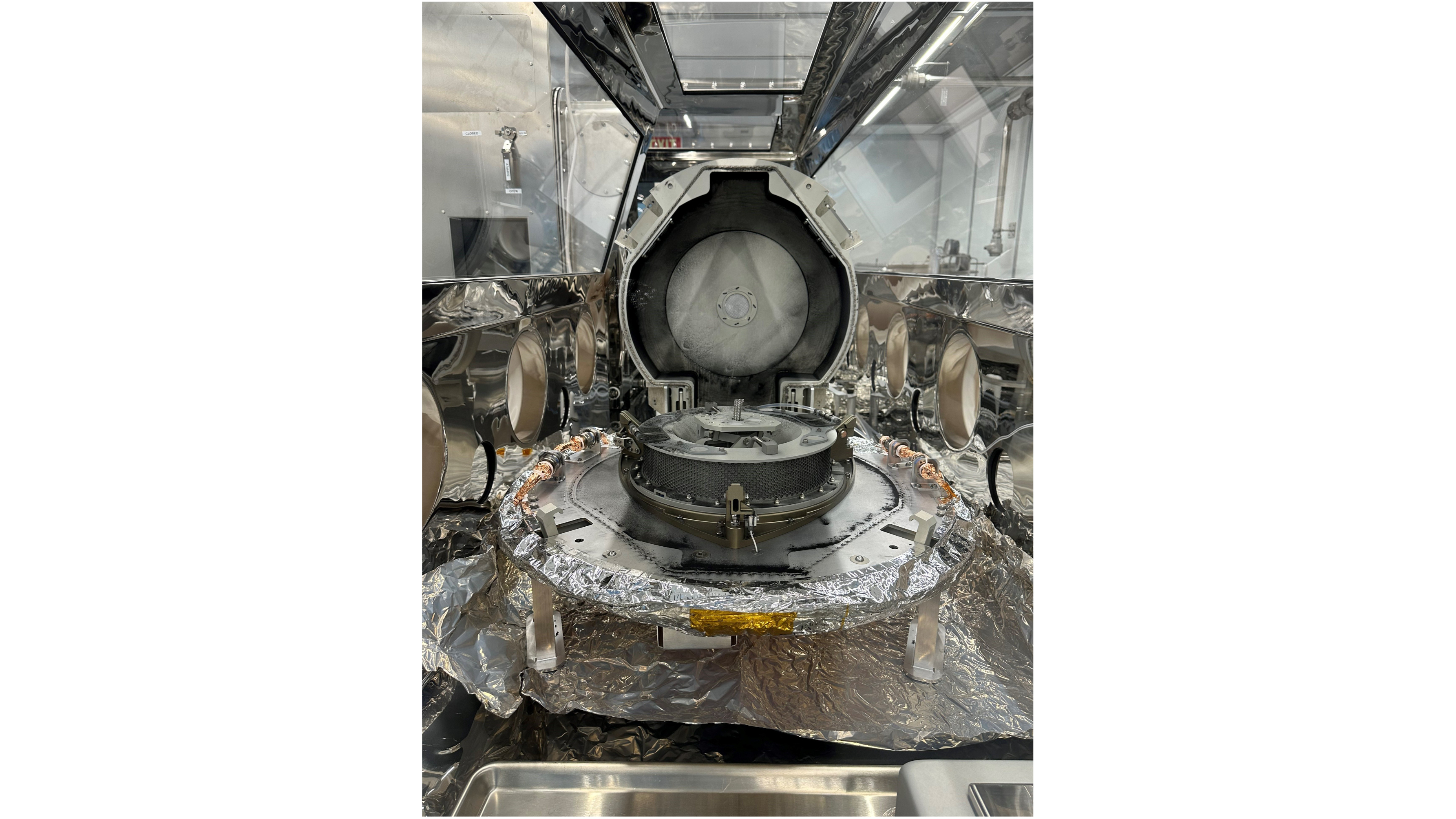
OSIRIS-REx's asteroid-sample canister just creaked open for the first time in more than seven years.
Scientists at NASA's Johnson Space Center (JSC) in Houston lifted the canister's outer lid on Tuesday (Sept. 26), two days after OSIRIS-REx's return capsule landed in the desert of northern Utah.
"Scientists gasped as the lid was lifted," NASA's Astromaterials Research and Exploration Science (ARES) division, which is based at JSC, wrote Tuesday in a post on X (formerly Twitter).
The operation revealed "dark powder and sand-sized particles on the inside of the lid and base," they added.
Related: NASA's OSIRIS-REx lands samples of asteroid Bennu on Earth after historic 4-billion-mile journey

That powder once resided on the surface of an asteroid named Bennu, the focus of the OSIRIS-REx mission.
OSIRIS-REx launched toward the 1,650-foot-wide (500 meters) Bennu in September 2016, arrived in December 2018 and snagged a hefty sample from the space rock in October 2020 using its Touch-and-Go Sample Acquisition Mechanism, or TAGSAM.
Get the Space.com Newsletter
Breaking space news, the latest updates on rocket launches, skywatching events and more!
The asteroid material landed in Utah inside OSIRIS-REx's return capsule on Sunday (Sept. 24), then made its way to Houston by plane on Monday (Sept. 25). It will be stored and curated at JSC, where the team will oversee its distribution to scientists around the world.
Researchers will study the sample for decades to come, seeking insights about the the solar system's formation and early evolution, as well as the role that carbon-rich asteroids like Bennu may have played in seeding Earth with the building blocks of life.
But that work isn't ready to begin; the ARES team hasn't even accessed the main asteroid sample yet. Doing so requires disassembly of the TAGSAM apparatus, an intricate operation that will take considerable time.
"There is a very high level of focus from the team — the sample will be revealed with an amazing amount of precision to accommodate delicate hardware removal so as not to come into contact with the sample inside," JSC officials wrote in a blog post on Tuesday.
And speaking of reveals: NASA will unveil the Bennu sample on Oct. 11 at 11 a.m. EDT (1500 GMT), during a webcast event that you can watch here on Space.com.
Join our Space Forums to keep talking space on the latest missions, night sky and more! And if you have a news tip, correction or comment, let us know at: community@space.com.

Michael Wall is a Senior Space Writer with Space.com and joined the team in 2010. He primarily covers exoplanets, spaceflight and military space, but has been known to dabble in the space art beat. His book about the search for alien life, "Out There," was published on Nov. 13, 2018. Before becoming a science writer, Michael worked as a herpetologist and wildlife biologist. He has a Ph.D. in evolutionary biology from the University of Sydney, Australia, a bachelor's degree from the University of Arizona, and a graduate certificate in science writing from the University of California, Santa Cruz. To find out what his latest project is, you can follow Michael on Twitter.









